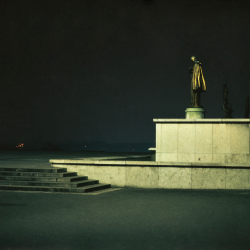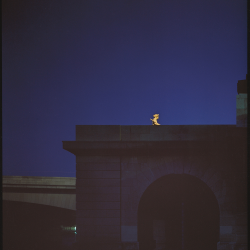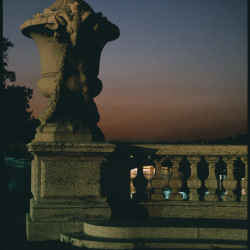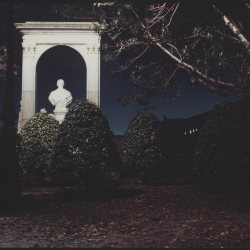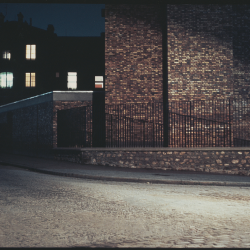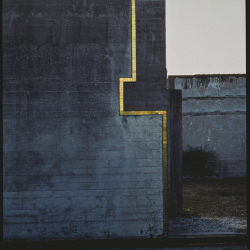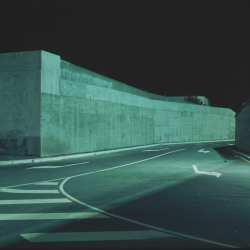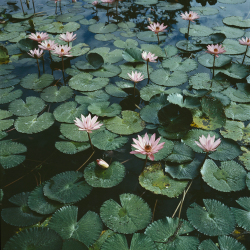Daniel Boudinet : le temps de la couleur
06.08.2018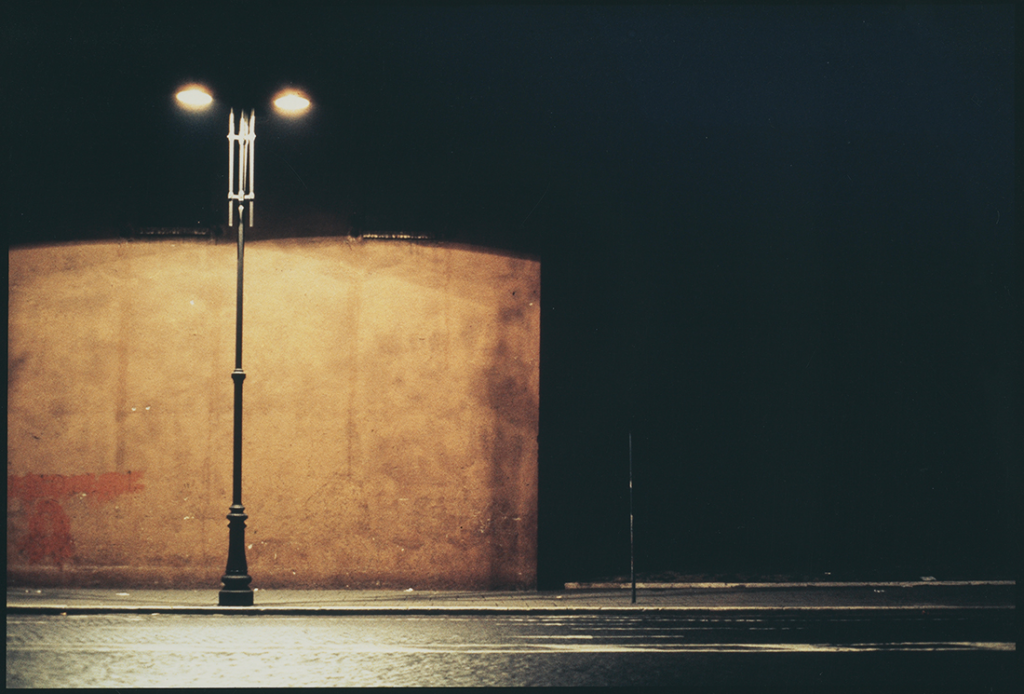
Daniel Boudinet - Réverbère et éclairage nocturne (Ministère de la Culture / Médiathèque de l’architecture et du patrimoine / Dist. RMN-GP © Donation Daniel Boudinet)
« Le temps de la couleur » is an exhibition at the Jeu de Paume museum dedicated to photographer Daniel Boudinet (1945-1990). The classic style of his work kept him at arm’s length from a sensational level of fame. He did not photograph an instant rather duration of presence.
Daniel Boudinet toiled to make photography a work of art. Worlds apart from commercial photography on one hand but just like moments from life snapped by his elders, he composed his shots like an ancient master. His technical mastery underpinned a considered image, with precise framing and the silent rigour of a subject under observation. He often chose to capture bedroom shots with long pauses: «Photos taken in a 500th or 125th of a second for a newspaper are usually taken to be seen at the same speed. A photograph taken in 125th of a second becomes interesting in my opinion when our gaze lingers for much longer than that.» But he also worked a lot with Polaroid techniques, a process that allowed him to experiment with shots and prints.
Daniel Boudinet did not photograph an anecdote, he did not seek out the sentimental or informative. His gaze was that of an architect of the image trying to provide a view with a balance of line and form. Also his pictures of architecture and landscapes with no living presence appear to be his greatest aesthetic successes and fly the flag for a photographic style. Yet these qualities are reflected in his portratis of artists and writers.
In the Sixties and Seventies, colour was often the reserve of adverts or family photos. Great photography was primarily in black and white. The exhibition at Jeu de Paume demonstrates the significance of his contribution to photography by using colour. When Boudinet chose colour to photograph certain subjects it was to geometrise the image, to give body and weight to form and certify the truth of the elements therein. These colours are not minor just as black and white are not insignificant. The city silenced by nightfall and bathed in electric light was a great opportunity to capture the mystery of the space, especially in Paris (Bagdad-sur-Seine, Arthème Fayard’s bookstore in 1973), as well as Alsace, London, Rome, Bomarzo, Petra in Jordan and Thailand, China and India. His pictoral art of architecture earned him commissions from historian Philippe Duboy (see Brion Tomb by Carlo Scarpa near Venice), the French Institute of Architecture and the National Fund for Historic Buildings.
His acquaintance Roland Barthes celebrated his work in a book on photography called « Camera Lucida ». They even signed an issue of photographic magazine Creatis together. The classic purity of his photography earned him the recognition of the artists, great writers and experts with a good eye. But the austerity and lack of effects in his pictures could not peak the interest of a wider public.
«It is a fine line between two voids: that of naturalism and that of aesthetics. I needed to draw it before saying how, in my eyes, D. B. managed to carry it off with such accuracy, power and fluidity. » (Roland Barthes)
NB: « Le temps de la couleur » exhibition will run from 16th June to 10th October 2018 at Jeu de Paume museum in Paris.
- Daniel Boudinet – Place du Trocadéro (Ministère de la Culture Médiathèque de l’architecture et du patrimoine Dist. RMN-GP © Donation Daniel Boudinet)
- Daniel Boudinet – Vue nocturne d’une pile de pont et d’une statue illuminée (Ministère de la Culture Médiathèque de l’architecture et du patrimoine Dist. RMN-GP © Donation Daniel Boudinet)
- Daniel Boudinet – Vue au crépuscule du Pont Alexandre III (Ministère de la Culture / Médiathèque de l’architecture et du patrimoine / Dist. RMN-GP © Donation Daniel Boudinet)
- Daniel Boudinet – Sculpture dans un parc (Ministère de la Culture / Médiathèque de l’architecture et du patrimoine / Dist. RMN-GP © Donation Daniel Boudinet)
- DanielBoudinet – Route et carrefour (Ministère de la Culture / Médiathèque de l’architecture et du patrimoine / Dist. RMN-GP © Donation Daniel Boudinet)
- Daniel Boudinet – Tombe Brion (Ministère de la Culture / Médiathèque de l’architecture et du patrimoine / Dist. RMN-GP © Donation Daniel Boudinet)
- DanielBoudinet – Route et carrefour II (DanielBoudinet – Route et carrefour (Ministère de la Culture / Médiathèque de l’architecture et du patrimoine / Dist. RMN-GP © Donation Daniel Boudinet)
- Daniel Boudinet – Nénuphars (Ministère de la Culture Médiathèque de l’architecture et du patrimoine Dist. RMN-GP © Donation Daniel Boudinet)


